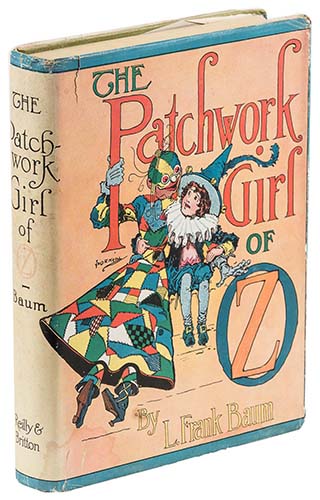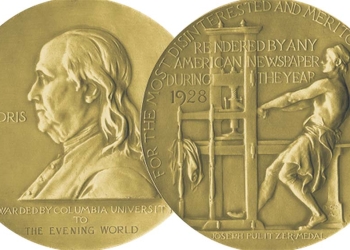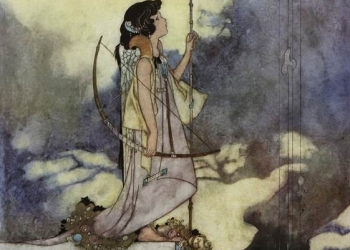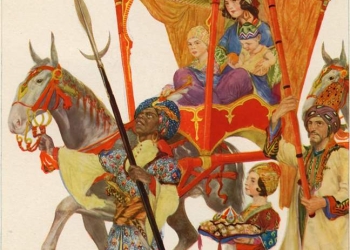Share via:
The Patchwork Girl of Oz by L. Frank Baum is a children’s novel, the seventh in the Oz series. Characters include the Woozy, Ojo “the Unlucky”, Unc Nunkie, Dr. Pipt, Scraps (the patchwork girl), and others. The book was first published on July 1, 1913, with illustrations by John R. Neill.
In the previous Oz book, The Emerald City of Oz, magic was used to isolate Oz from all contact with the outside world. Baum did this to end the Oz series, but was forced to restart the series with this book due to financial hardship. In the prologue, he reconciles Oz’s isolation with the appearance of a new Oz book by explaining that he contacted Dorothy in Oz via wireless telegraphy, and she obtained Ozma’s permission to tell Baum this story.
Summaries

Ojo, known as Ojo the Unlucky, lives in poverty with his laconic uncle Unc Nunkie in the woods of the Munchkin Country in Oz. They visit their neighbor, the magician Dr. Pipt who is about to complete the six-year process of preparing the magical Powder of Life, which can bring inanimate objects to life. Pipt’s wife has constructed a life-sized stuffed girl out of patchwork, and wishes her husband to animate her to serve as an obedient household servant. They also meet another of Pipt’s creations, Bungle, an extremely vain talking cat made of glass. The Powder of Life successfully animates the patchwork girl, but an accident causes both Pipt’s wife and Unc Nunkie to be turned to stone. Dr. Pipt tells Ojo that he must obtain five ingredients to make a compound to counteract the petrifaction spell.
Ojo and the patchwork girl, who calls herself Scraps, along with Bungle, embark on a journey to obtain the magic ingredients: a six-leaved clover, the wing of a yellow butterfly, water from a dark well, a drop of oil from a live man’s body, and three hairs from a Woozy’s tail. Scraps exhibits a wild, carefree personality, and is prone to spontaneous recitation of nonsense poetry. After several adventures, they meet a Woozy, a blocky quadruped who agrees to let them have three hairs from its tail. But they are unable to remove the hairs, so they take the Woozy along with them.
The party is captured by large animate plants, but they are rescued by the fortuitous arrival of the Shaggy Man. He leads them to the Emerald City to meet Princess Ozma, but warns Ojo that picking a six-leaved clover is forbidden by law in Oz. Along the way they meet the Scarecrow, who is quite smitten with Scraps, as she is with him. Just outside the Emerald City, Ojo sees a six-leaved clover by the road and, believing himself to be unobserved, picks it. When they arrive at the city gates, the Soldier with the Green Whiskers approaches them and announces that Ojo is under arrest.
Brought to trial before Ozma, Ojo confesses and Ozma pardons him and allows him to keep the clover. Dorothy and the Scarecrow join Ojo and Scraps as they continue their search for the remaining ingredients. Along the way they meet Jack Pumpkinhead, the playful but annoying Tottenhots, and the man-eating 21-foot-tall giant Mr. Yoop, before reaching the subterranean dwellings of the Hoppers, who each have just one leg, and the neighboring Horners, who each have one horn on their head. The two groups are on the verge of war due to a misunderstanding, but Scraps reconciles them. A grateful Horner leads the group to a well in a dark radium mine, and Ojo collects a flask of water from it.
The group continues to the castle of the Tin Woodsman who rules the Winkie Country, since yellow butterflies are most likely to be found in that yellow-dominated quadrant of Oz. While talking to the Tin Woodsman, Ojo notices a drop of oil about to drip from his body, and he catches it in a vial. He explains that he now has all the ingredients except one. But when he describes the last one, the Tin Woodsman is horrified at the idea of killing an innocent butterfly, and forbids them from doing so in his realm. Ojo is devastated, but the Tin Woodsman proposes that they all travel back to the Emerald City to ask Ozma’s advice.
Ozma tells them that Dr. Pipt has been practicing magic illegally and has therefore been deprived of his powers. But the petrified Unc Nunkie and Pipt’s wife have been brought to the Emerald City and as they all watch, the Wizard of Oz restores them to life. Ojo and Unc Nunkie are given a new house to live in near the Emerald City and the Tin Woodsman calls Ojo “Ojo the Lucky”.
Frank Baum – Patchwork Girl of Oz First Edition Book Identification Points
Please refer to the gallery for detailed images of binding(s) and dust jackets.
| Year | Title | Publisher | First edition/printing identification points |
|---|---|---|---|
| 1913 | The Patchwork Girl of Oz | Reilly & Britton Co., [1913] | First edition. Illustrated by John R. Neil, 340 pages. Textual points: There are five pages of publisher’s advertisements at the end of the book giving synopses of The Land of Oz, Ozma of Oz, Dorothy and the Wizard in Oz, The Road to Oz, and The Emerald City of Oz. Binding: light-green cloth, stamped in dark green, red, and yellow. A drawing of the Woozy in red and dark green appears on the spine. The publisher’s imprint at the foot of the spine reads: “Reilly & | Britton”; the “R” in the imprint is 3/16 inch high, and the ampersand has a 1/16 inch opening at the top. SECONDARY BINDING: Light-tan cloth, otherwise identical with the cover described above except that the spine imprint has been reset in very slightly different type: the “R” is 5/32 inch high and the opening at the top of the ampersand is 1/32 inch. See note below. Dust jacket: issued in a full-color dust jacket with a different illustration, on the front, back, and spine, from that which appears on the binding. The front and back flaps are blank. Size of leaf: 9 by 6 5/8 inches. Thickness of volume: 11/4 inches. The Patchwork Girl of Oz is known in a Canadian issue with the imprint of the Copp, Clark Co., Limited, of Toronto on the title page and spine. It is bound in light-green cloth and has the later positioning of “CHAP. THREE”. Later Printings Subsequent printings of The Patchwork Girl of Oz have the Reilly & Lee imprint and are bound in various colors of cloth stamped in black, yellow, and red. The earliest is almost identical with the Reilly & Britton edition in the secondary binding, with the Woozy on the spine in red and dark green. Copies with advertisements on the verso of the half-title page through The Magic of Oz (1919) have the Woozy in black. Later copies with advertisements through Kabumpo in Oz (1922) and The Cowardly Lion of Oz (1923) and copies without advertisements on die verso of the half-title page (which are probably still later) have the Woozy in red and black. The announcement on page [343] is omitted in Reilly & Lee printings. Copes printed after 1930 have pictorial paper labels on their front covers. This label design is identical with that which appeared as the front panel of dust jackets of the previous states. The picture of the Woozy on the spine has been replaced by one of Tik-Tok taken from the spine of Tik-Tok of Oz. By 1935, the color printing in the text was discontinued, leaving the endpapers and illustrations in black and white. The chapter numbers at the beginning of each chapter had been printed in color and were now also eliminated. |
Frank Baum – Patchwork Girl of Oz Edition Dust Jacket Identification Points
First edition binding(s) and various Dust Jacket printings identification.
Reference:
- Wikipedia
- Bibliographia Oziana – Haff, Greeme, Martin. 2002











